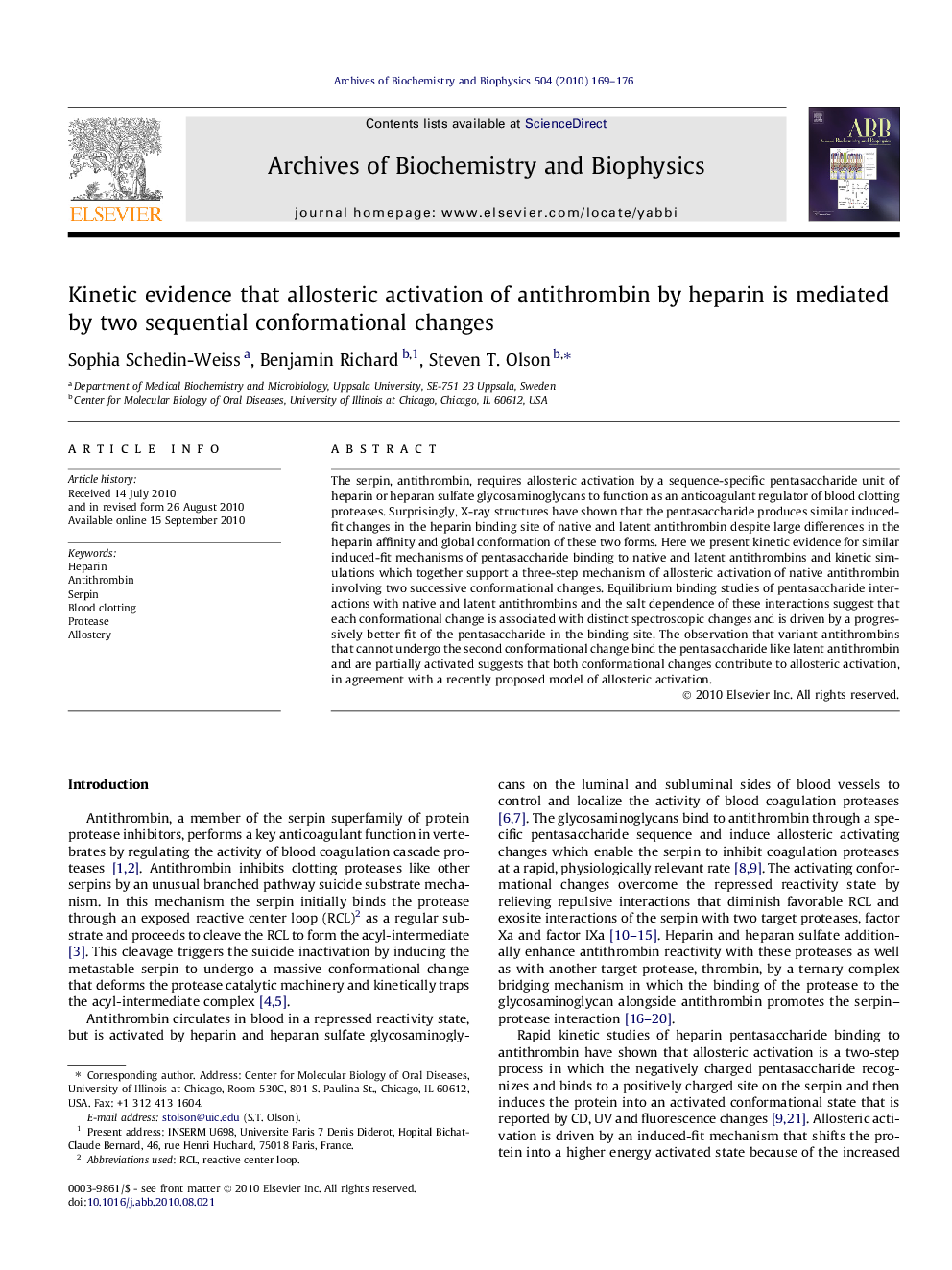| Article ID | Journal | Published Year | Pages | File Type |
|---|---|---|---|---|
| 1925964 | Archives of Biochemistry and Biophysics | 2010 | 8 Pages |
The serpin, antithrombin, requires allosteric activation by a sequence-specific pentasaccharide unit of heparin or heparan sulfate glycosaminoglycans to function as an anticoagulant regulator of blood clotting proteases. Surprisingly, X-ray structures have shown that the pentasaccharide produces similar induced-fit changes in the heparin binding site of native and latent antithrombin despite large differences in the heparin affinity and global conformation of these two forms. Here we present kinetic evidence for similar induced-fit mechanisms of pentasaccharide binding to native and latent antithrombins and kinetic simulations which together support a three-step mechanism of allosteric activation of native antithrombin involving two successive conformational changes. Equilibrium binding studies of pentasaccharide interactions with native and latent antithrombins and the salt dependence of these interactions suggest that each conformational change is associated with distinct spectroscopic changes and is driven by a progressively better fit of the pentasaccharide in the binding site. The observation that variant antithrombins that cannot undergo the second conformational change bind the pentasaccharide like latent antithrombin and are partially activated suggests that both conformational changes contribute to allosteric activation, in agreement with a recently proposed model of allosteric activation.
Research highlights► Heparin interacts with native and latent forms of antithrombin by similar induced-fit mechanisms. ► Kinetic evidence supports a 2-stage mechanism of allosteric activation of antithrombin by heparin. ► The first stage involves heparin binding and induced-fit steps common to latent antithrombin. ► The second stage involves activating conformational changes unique to native antithrombin. ► Each stage partially activates antithrombin and is driven by an induced-fit binding of heparin.
